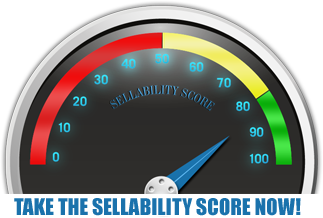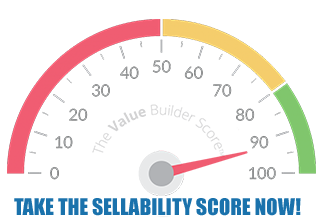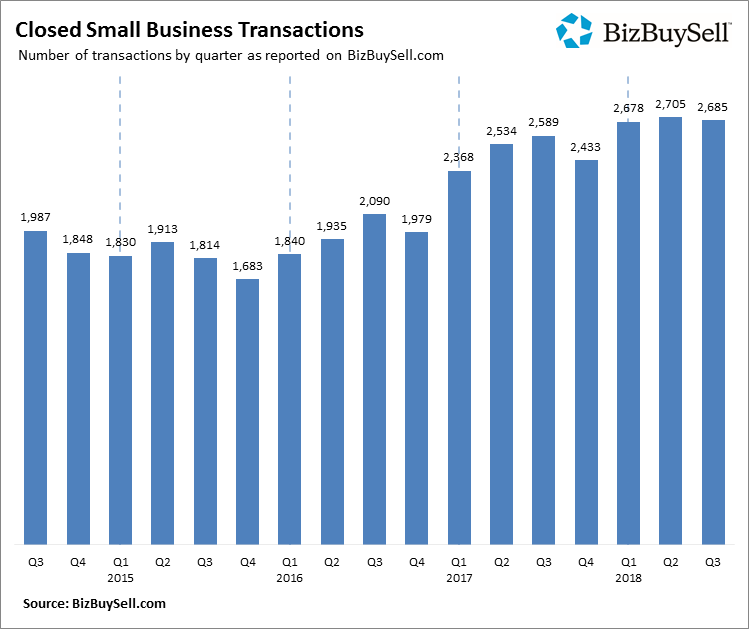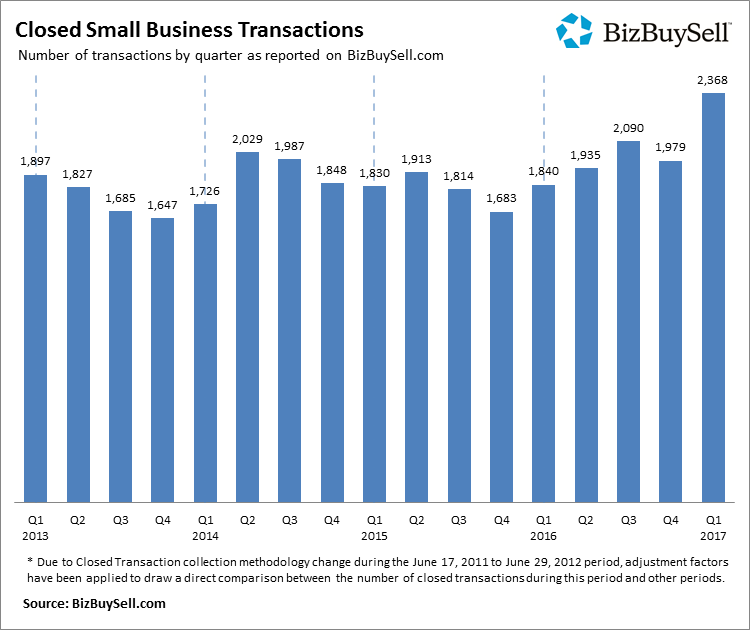Article written by Danielle Fugazy | May 17, 2018 and provided courtesy of Axial.net
The M&A market as a whole remains white hot and the lower middle market is no exception. Sellers are undoubtedly benefiting from today’s strong market conditions. “The market is as robust as it’s ever been. We are seeing high valuations. Average purchase price multiples are at at an all-time high in mid seven times EBITDA,” says Graeme Frazier, president of Private Capital Research LLC and a founder of GF Data, a data provider that tracks companies with enterprise values of $10 million to $250 million. “Even rising interest rates are not quelling demand.”
There are multiple factors leading to the frenzied deal pace in the lower middle market. First, there’s a tremendous amount of capital in the market. The abundance of dry powder has been well documented over the years. Second, the lending markets are feeding the frenzy. According to GF Data, debt multiples have reached a total of 4.2 times EBITDA and on the senior side they have inched up to 3.4 times EBITDA in the lower middle market. “It’s not a record, but there is sustained strength in the lending market for sure,” says Frazier.
Robin Engleson, a managing partner with Sapphire Financial, which provides debt and equity to middle and lower middle market companies, says it’s the combination of both the dry powder and equity available fueling activity. “You have an abundance of debt, and buyers are willing to over equitize these transactions today. Today, lower middle market companies that have a reasonable story have a good shot of getting the highest valuations they could ever get,” she says.
Additionally, some of the frothiness in the lower middle market can be attributed to larger buyout firms and strategic acquirers—perhaps priced out of their own markets—coming down market to find good deals. One of the main reasons private equity firms look down market is to average out their cost of capital. After buying a platform company at a high valuation they more frequently move down market to find add-on opportunities at a better price to average down their costs. According to Pitchbook, as of Q2 2018 roughly half of all buyouts globally and more than two-thirds of all buyouts in the U.S. are add-ons. In the first quarter alone add-ons accounted for 70 percent of all buyout activity.
“You are seeing a lot of traditional middle market sponsors compete in the lower middle market. Valuations are high for good middle market platform companies and so they’ve entered the lower middle market to find a company that can serve as a buy-and-build platform,” says Dan Lipson, a partner with Rotunda Capital, a Washington, DC-based private equity firm. “With more resources dedicated towards business development, either through internal staff or external buyside firms, traditional middle market sponsors feel comfortable they can deploy an adequate amount of equity capital through an add-on acquisition strategy even when starting with a lower middle market platform. It’s given growth to companies like Axial and the role of the business development professional.”
Moving away from financial engineering and organic growth, it’s clear that the buy and build strategy have become one of the most common value creation tactics today. According to Pitchbook, it’s most frequently used in sectors that are highly fragmented like healthcare and education.
As a result of the strong market dynamics at play even less attractive deals are starting to get more attention. “The higher quality deals get done at a premium. Even deals that aren’t above average are starting to get bid up. The quality premium is narrowing. This is when things can start to get ugly. During a downturn your higher quality assets will weather the storm. Assets that are of lesser quality will have difficulty,” warns Frazier. “We see the IRRs they are modeling and unless they are able to grow these assets fast, it’s going to be challenge to make the return on capital with the high valuations that were paid or make it through lean times.”
Waiting for things to turn
Many typical lower middle market investors continue to wait on the sidelines for valuations to come down. “It’s a competitive market. Everyone’s look-to-bid and bid-to-close ratio is lower. We look at a lot of attractive companies, but we constantly push ourselves to remain disciplined. Unfortunately that means we are sometimes passing on companies in auction simply because we know the market clearing price is beyond what we’re willing pay,” says Lipson. “It’s not an easy market to be a buyer. When you’re paying full value, you have to have to be very focused and confident that you can execute your value creation strategy.”
Jeff Kadlic, a founder of Evolution Capital Partners, a lower middle market private equity firm, agrees that it is hard to compete in today’s market. “The larger funds are just so well capitalized that they don’t even need financing contingencies to close acquisitions in the lower end of the market, so it’s an attractive offer as a seller. The valuations for growth have become eye popping,” he says.
Hunter Street Partners, a firm that provides opportunistic debt and equity to the lower middle market, is looking to target areas where they feel there are pockets of dislocation. “We are looking for good companies with stressed balance sheets. There is not a lot of distress yet, but frothiness leads to dislocation. Although tough to predict when dislocations will increase, we are positioned to further take advantage of them as they occur,” says Neal Johnson, CEO and founder of the firm.
Despite feeling like the market is at the top or close to it, market professionals don’t see anything on the horizon that will change market conditions anytime soon. “There’s no sign of a slow down. We are seeing a lack of good target companies, but there’s nothing to make us believe that demand for lower middle market companies will slow. It’s certainly a compelling market to be a seller,” says Frazier.
Frazier also suggests that the growth of the private lending industry in the lower middle market could be a red flag, but says even that is only fueling demand. “After traditional banks had their wings clipped finance companies came in to fill the void. The underwriting standards can become relaxed, just like they did in the last cycle, but still we have no reason to believe things won’t continue as they are. There’s no fundamental reason for them to stop.”
Sapphire’s Engleson says she is seeing creative lending structures put in place to help boost returns from lower middle market companies. “As soon as lower middle market companies reach a certain threshold, their valuation multiples go up. This has always been true, but the increase is more significant now. Buyers are entertaining the purchase of smaller and smaller companies as combining them and bringing them to that next level today can mean increasing their value from five to six times EBITDA to 10 times EBITDA. This scenario is happening a lot more frequently. It’s a great time to be a seller.”
Is now the time to consider selling your business?
Complete the “Value Builder” questionnaire today in just 13 minutes and we’ll send you a 27-page custom report assessing how well your business is positioned for selling. Take the test now:









